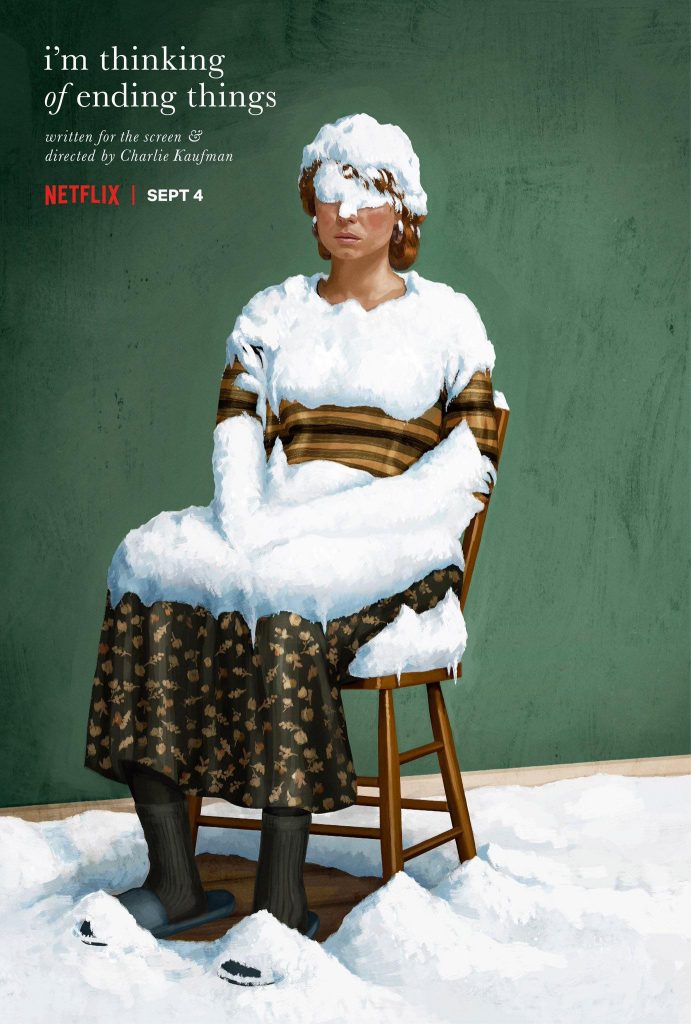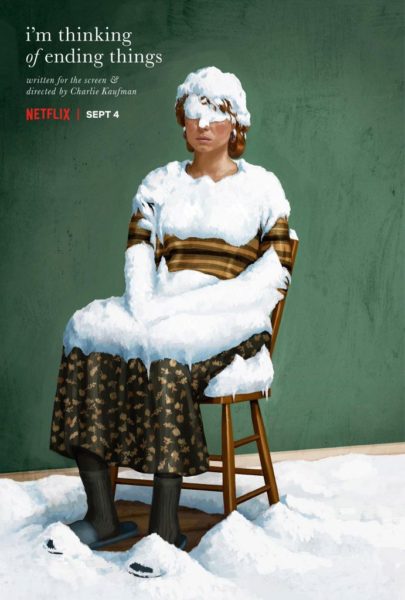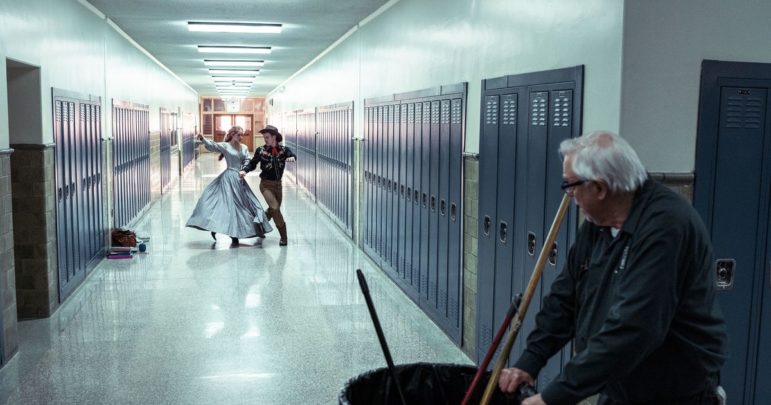

Netflix’s “I’m Thinking of Ending Things,” released on Sept. 4, is a haunting rendition of a typical movie plot: a boy and a girl meet and form a romantic relationship clouded with conflict. The psychological thriller leaves viewers in sheer shock. Director Charlie Kaufman, whose notable works include “Eternal Sunshine of the Spotless Mind” and “Being John Malkovich,” adapted “I’m Thinking of Ending Things” from Iain Reid’s 2016 novel. The film received a score of 82% on Rotten Tomatoes, and critics describe it as a film that “will mess you up” and “inspire you to think about it again.” Initially, the rating seemed unreasonably high, but after watching, why viewers gave the film such high praise is clear.

The film’s plot, although deceivingly simple at first glance, plays out to be much more complicated than anticipated. The movie revolves around a janitor in his old age, Jake (Jesse Plemons), who suffers from mental illness and bouts of loneliness. He fabricated a false reality of a perfect life including an unnamed woman (Jessie Buckley).
While Kaufman worked off Reif’s story at its very core, his on-screen adaptation doesn’t state the obvious like the novel does. He heavily relies on the use of visual symbolism to convey the film’s small nuances. Shots of Jake getting ready for his job as a janitor are intertwined with an idealized version of him, both peering out the car window at a swing set, contrasting his real-life versus his elaborate fantasy and connecting them as the same person. The woman’s disconnect in her own identity is communicated through the phone calls she receives under various monikers: Lucy, Lucia, Louisa.The theme of age and time is prevalent throughout the film, and it can be seen when Jake’s parents (Toni Collette and David Thewlis), who are dead in reality, seesaw between signs of life and death.
“He heavily relies on the use of visual symbolism to convey the film’s small nuances”
Despite the film being set in the 21st century, components such as the set, prop choices, classical music, costumes and coloring and lack of saturation, all veer towards a nostalgic feeling in comparison to the futuristic style of most modern films. The camerawork effectively nudges viewers towards the importance of the symbols letting the viewer dive into the character’s internal dialogue and outwards body language brilliantly. Balancing a sense of raw emotional vulnerability without coming across as cliche, the acting allows the audience to be a fly on the wall as the plot plays out. Both Buckley and Plemons embody their characters with grace. Buckley’s acting reflects the duality of her character: innocent but complicated by doubt. The film’s buildup towards the climax was intended to be subtle but fails to signal the viewer. Jake and the unnamed women are seen hugging in a school hallway before the what can be interpreted as the crescendo, and their body language the is an obvious indication of parting. However, the ending has no clear segway.

In Reif’s novel, the ending is blunt and violent — Jake ends his and Lucy’s life with a hanger. Kaufman deliberately chooses to avoid the obvious, still exemplifying death, rather inserting himself into Jake’s imagination to produce an artistic spectacle. The film’s ending concludes in a vague manner, meant to be open to interpretation.
“He takes viewers through an emotionally intense journey not meant for casual viewing”
The horror movie genre as a whole relies on action and drama throughout, giving a simple and straightforward viewing experience where the audience already knows what to expect. Kaufman elevates a traditional horror film, offering a fresh take on the repetitive nature of this genre. The communication of the film does not represent a cookie-cutter scary movie because the fear factor lies in the play on the viewer’s psychology through the nuances of the deceivingly simple plot.
Kaufman doesn’t hold back with his creative decisions and use of themes. He takes viewers through an emotionally intense journey not meant for casual viewing. At times, the film feels particularly laborious to watch, as the viewer needs their undivided attention to begin to comprehend the full weight of the symbolism. Whether intentional or not, the audience is left feeling conflicted about who to with, or if they should even sympathize with any character.





